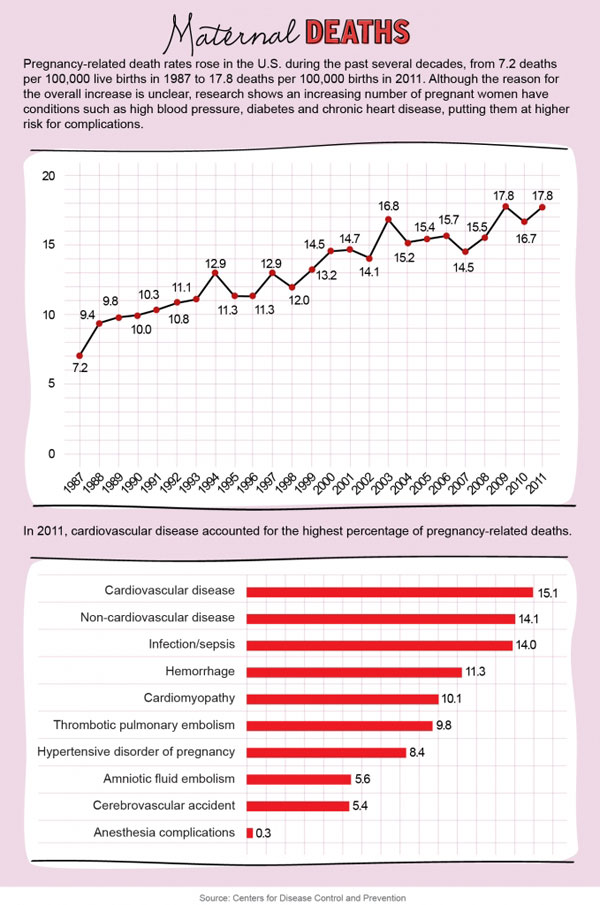
The American Heart Association released the first comprehensive recommendations addressing the complicated issue of cardiac arrest during pregnancy. The scientific statement was published in the AHA’s journal Circulation.
Cardiac arrest and other causes of death during pregnancy are on the rise. In the U.S., the most common causes of maternal cardiac arrest include bleeding, heart failure, amniotic fluid embolism — when the fluid around the baby enters the mother’s bloodstream and causes an allergic reaction — and sepsis, a severe infection. Nearly six out of 10 pregnant women who have an in-hospital cardiac arrest survive, according to research.
Steps bystanders or attendants can take to help pregnant women who go into cardiac arrest, according to the statement.
- Call emergency and tell the operator that the woman in cardiac arrest is pregnant. This will alert the emergency medical system to take special measures such as sending additional EMS providers and taking the patient to a hospital that can perform an emergency C-section if necessary.
- Start CPR, with chest compressions performed in the same way as for a woman who’s not pregnant, pushing hard and fast at the center of the chest at a rate of at least 100 compressions per minute. CPR in a pregnant woman should be done in cycles of 30 compressions and two breaths. It is also safe to use an automated external defibrillator, or AED, if one is available. An automated external defibrillator (AED) is a portable device that checks the heart rhythm and can send an electric shock to the heart to try to restore a normal rhythm. AEDs are used to treat sudden cardiac arrest (SCA).
According to the statement’s lead author Farida Mary Jeejeebhoy, M.D., a cardiologist at the University of Toronto and William Osler Health System in Brampton, Canada “Bystanders should not be afraid they might hurt the unborn baby, shock from a defibrillator and chest compressions will not harm the fetus, the fetus will likely not survive if the mother does not receive these life-saving measures.” -
If revived, the pregnant woman should be placed on her left side to improve blood flow to the heart and therefore to the fetus..
Women who have chronic health problems or underlying illnesses should be counseled about the risks of pregnancy before becoming pregnant, according to the statement. Those at risk who become pregnant should receive care from specialists in obstetric medicine.
The statement also provides an early-warning score chart for healthcare providers that can predict when a pregnant patient might have a cardiac arrest.
It is very important that all hospitals have a response plan for cardiac arrest in pregnancy.
Performing Cardio-Pulmonary Resuscitation (CPR)
|
Cardiopulmonary resuscitation (CPR) is a lifesaving technique. The American Heart Association recommends that everyone — untrained bystanders and medical personnel alike — begin CPR with chest compression.
Remember, it’s far better to do something than to do nothing at all.
References
Related links
Disclaimer
The Content is not intended to be a substitute for professional medical advice, diagnosis, or treatment. Always seek the advice of your physician or other qualified health provider with any questions you may have regarding a medical condition.
